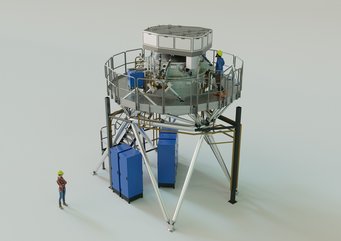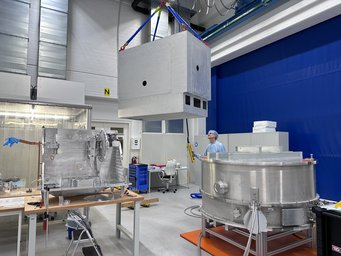Milestone for the ELT instrument METIS: "Final Design Review" successfully passed
A few days ago, an important milestone was reached for the first high-tech measuring instrument of the largest telescope of all time for optical and infrared wavelengths, the ELT, which is currently under construction in Chile: The instrument called METIS, in whose development and construction the Max Planck Institute for Astronomy (MPIA) is also significantly involved, has become the first ELT instrument to pass the so-called "Final Design Review”.
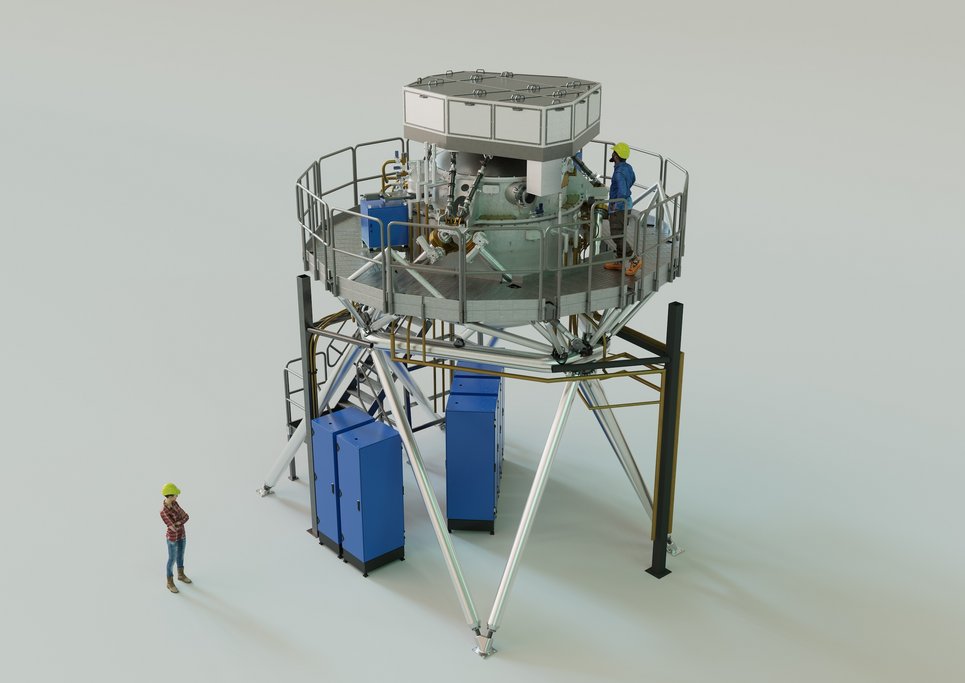
The Extremely Large Telescope (ELT) of the European Southern Observatory ESO, which is currently under construction in Chile, will successfully look into the universe for the first time towards the end of this decade. To reach this important goal, the new cameras and measuring instruments must also be ready for use in order to utilize the gigantic 39m mirror of the ELT. Only with such instruments it will be possible to receive the faint light collected by the ELT from distant planets, stars and galaxies and make it available to science in the form of images and spectra.
One of the first three instruments to be used at the ELT is the Mid-infrared ELT Imager and Spectrograph - METIS for short. The instrument will not only be able to record diffraction-limited and - supported by a coronograph - extremely high-contrast images, but it will also be able to be used in various spectroscopic modes. Depending on the operating mode, all this is done at mid-infrared wavelengths between 3 and 13 micrometers. Among other things, this will allow exoplanets and their natal planet-forming discs around young stars to be studied in unprecedented detail.
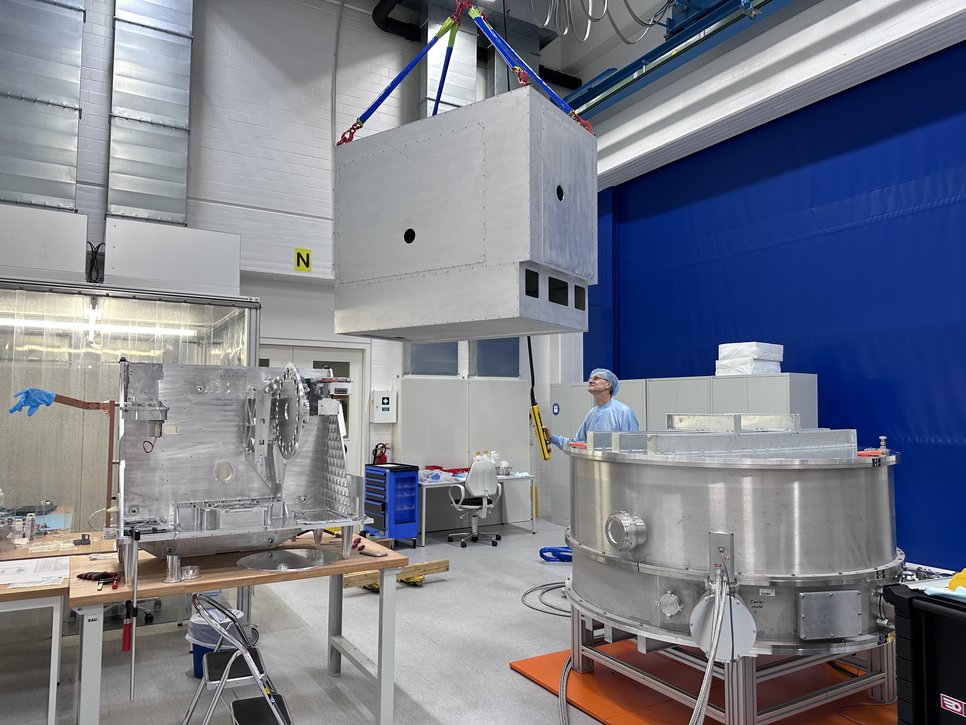
As can be expected, the development and construction of high-tech instruments such as METIS takes many years. A decisive milestone has now been reached with METIS. With the completion of the so-called “Final Design Review” - FDR for short - the final overall design of the instrument has finally been confirmed in every detail and all remaining components, that have not already been made can be manufactured and assembled. METIS is therefore the first instrument for the ELT for which this essential step has been completed. The actual FDR review already took place in November 2022, but some details still had to be revised since then. Now, ESO has officially completed the process. The MPIA subsystems (the imaging camera IMG and the adaptive optics module SCAO, see also here) have successfully passed the FDR test without any criticism. And so parts that have already been manufactured are being assembled and tested in the MPIA's experimental hall. This process will continue over the next few years until the beginning of 2027, when the MPIA subsystems IMG and SCAO will be brought to Leiden for system integration into the overall instrument. After successful PAE (the “Preliminary Acceptance Europe”) in July 2028, the transportation to Chile will take place. After installation at the ELT on the Chilean mountain Cerro Armazones, the so-called “First Light” is expected in 2029. At “First Light”, the instrument will see real starlight for the first time and can be tested in practice.
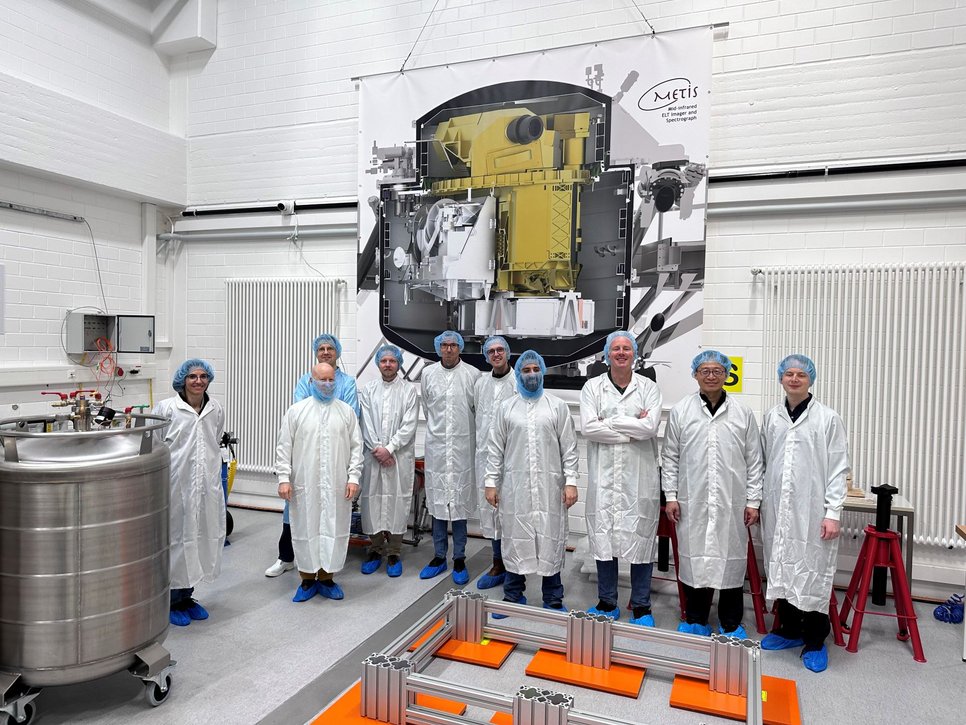
METIS is being built by a European consortium under the leadership of the Dutch PI Institute NOVA. MPIA is the second largest partner in the consortium, which also includes ATC (UK), CEA (France), ETH (Switzerland), KUL (Belgium), CENTRA (Portugal), the Universities of Vienna and Linz (Austria), Cologne (Germany), Liège (Belgium), Michigan (USA) and ASIAA (Taiwan).
In addition to METIS, the MPIA Heidelberg is also heavily involved in MICADO - another of the three first-generation instruments (see here).
Further interesting links:
- ESO press release on the METIS FDR
- ELT website
- Webcams from the ELT construction site in Chile
- Website of the METIS consortium
- METIS website at MPIA
- MPIA announcement on METIS and MICADO from the year 2023
KJ
